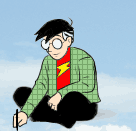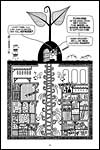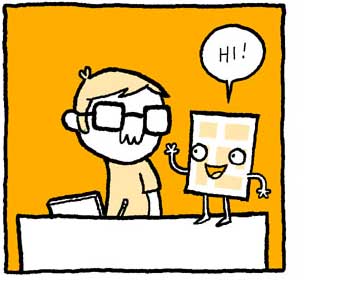 Lately, I’ve been thinking about the role of criticism, specifically negative reviews of comics and how they tend to be received by the creative individuals involved.
Lately, I’ve been thinking about the role of criticism, specifically negative reviews of comics and how they tend to be received by the creative individuals involved.
For myself, I always consider reviews useful—even the hatchet jobs. It makes my heart sink a little when I hear other artists dismiss all reviews as irrelevant to their process. A common claim is that reviews tell us “only about the reviewer” and tell us “nothing about the work,” but I disagree. Yes, reviewers have biases. Yes, they miss the point sometimes. But there’s always some kind of information embedded in any reaction to any creative effort.
Take an extreme example:
Suppose you’re a cartoonist, and ten years ago you made a casual remark about some political issue in an interview or on a panel. A stranger decides they don’t like you, based entirely on this one remark.
Ten years later, you’ve just published your first graphic novel. You’ve poured your heart into it. It’s a thousand pages long, it’s everything you wanted it to be. And an online review site hires that same stranger to review the book.
Still upset about the political remark you made a decade earlier, the stranger-turned-critic savages your magnum opus, tears it to shreds, all the while clearly referencing a perceived political position which has nothing to do with the book, and is nowhere in the book. All negatives. No positives. All based on that one remark from ten years ago.
If you were that cartoonist, you could easily dismiss such a review. You could easily say that a bitter, biased, petty review like that is a classic example of a completely useless review, that it told you “only about the reviewer” and told you “nothing about the work.”
But you’d be wrong.
Because even in that extreme example there was a vital piece of information about your work that was worth paying attention to: The simple fact that your art and/or story were insufficiently powerful to overcome a grudge.
And that’s information worth having.


























 Lately, I’ve been thinking about the role of criticism, specifically negative reviews of comics and how they tend to be received by the creative individuals involved.
Lately, I’ve been thinking about the role of criticism, specifically negative reviews of comics and how they tend to be received by the creative individuals involved.
 The Webcomic Overlook
The Webcomic Overlook 